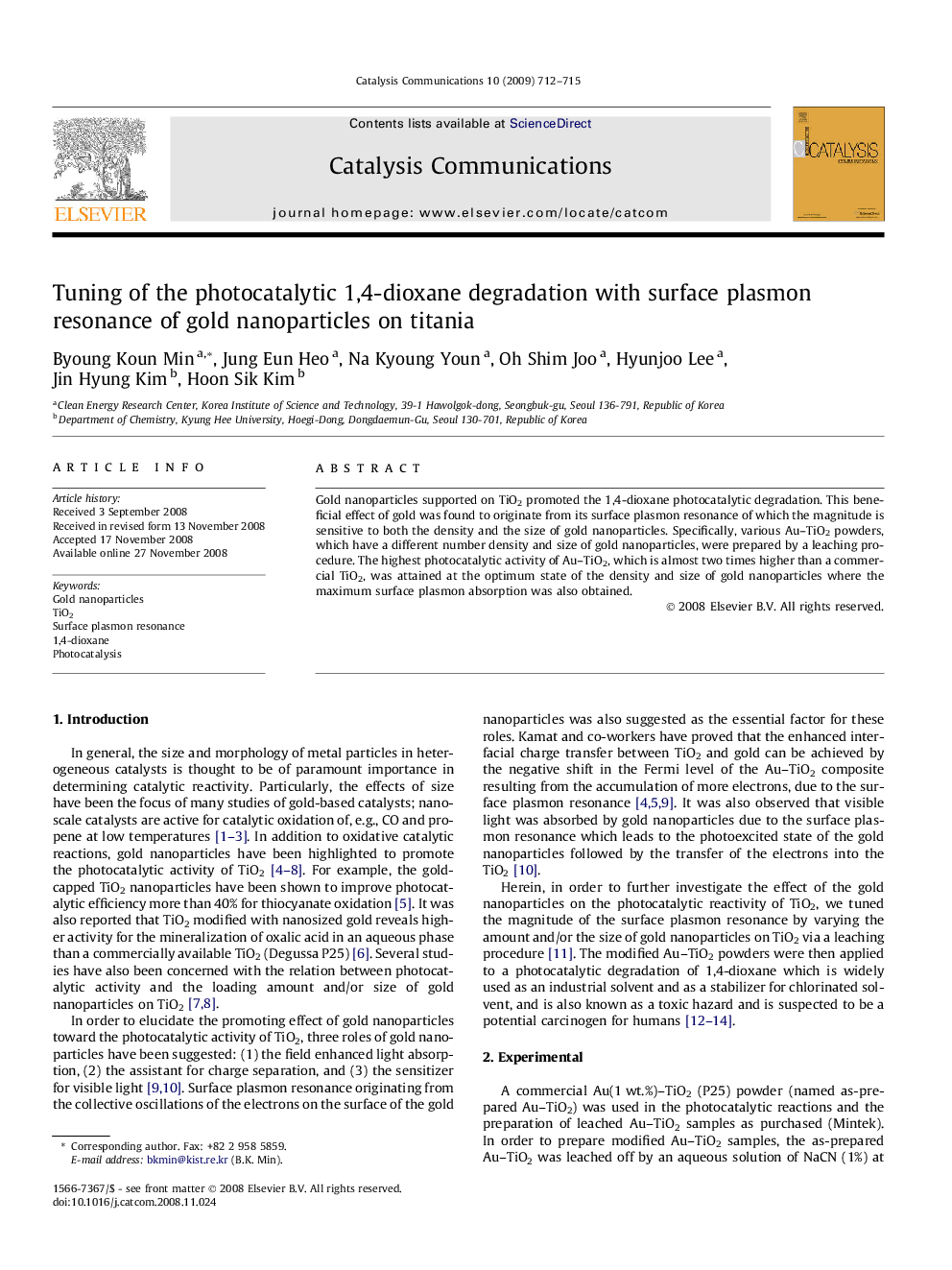| Article ID | Journal | Published Year | Pages | File Type |
|---|---|---|---|---|
| 52983 | Catalysis Communications | 2009 | 4 Pages |
Abstract
Gold nanoparticles supported on TiO2 promoted the 1,4-dioxane photocatalytic degradation. This beneficial effect of gold was found to originate from its surface plasmon resonance of which the magnitude is sensitive to both the density and the size of gold nanoparticles. Specifically, various Au–TiO2 powders, which have a different number density and size of gold nanoparticles, were prepared by a leaching procedure. The highest photocatalytic activity of Au–TiO2, which is almost two times higher than a commercial TiO2, was attained at the optimum state of the density and size of gold nanoparticles where the maximum surface plasmon absorption was also obtained.
Related Topics
Physical Sciences and Engineering
Chemical Engineering
Catalysis
Authors
Byoung Koun Min, Jung Eun Heo, Na Kyoung Youn, Oh Shim Joo, Hyunjoo Lee, Jin Hyung Kim, Hoon Sik Kim,
